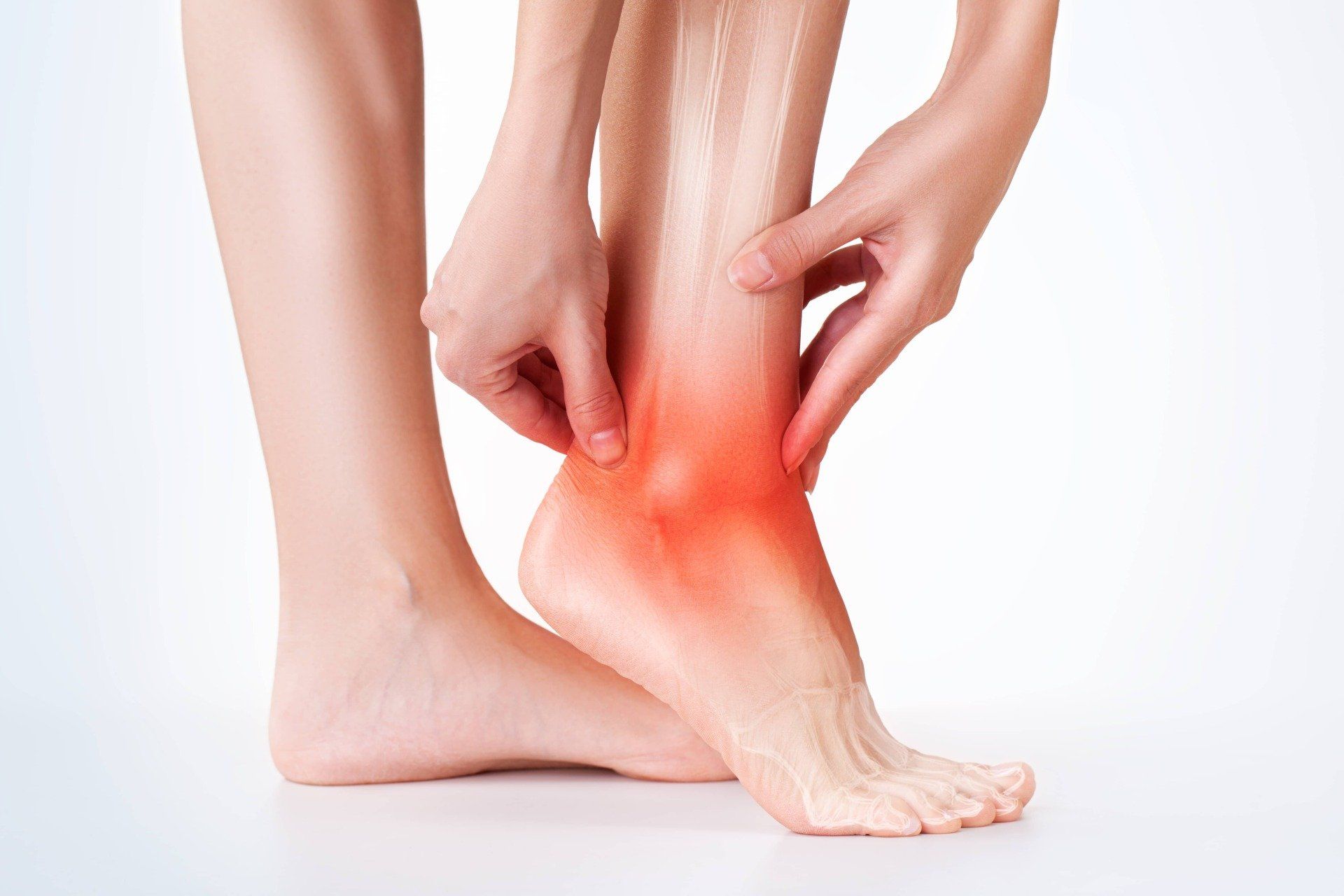Ankle Pain
What is Ankle Pain?
Ankle pain is a common problem experienced by athletes involved in different activities such as running and jumping as well as non athletes as part of everyday life.
The ankle is composed of different structures including bones, ligaments, tendons, and muscles. Normally ankle pain can be treated through home treatments and may take time to heal. However, in cases of ongoing pain or severe injury, adequate evaluation and treatment is required.
What Causes Ankle Pain?
Ankle pain may arise due to advanced age, being overweight, excessive sports activities or walking, injury or trauma, inborn deformities, poorly fitted shoes, and from standing on your feet for a long duration.
Certain disorders and conditions may also induce ankle pain and include:
- Ankle Sprains
- Ankle Instability
- Achilles Tendinitis
- Achilles Rupture
- Ankle Arthritis
- Ankle fractures
- Diabetic neuropathy (nerve damage caused by diabetes)
- Osteomyelitis (bone infection)
- Stress fractures
- Ganglions
How is Ankle Pain Diagnosed?
Medical History
Your doctor will ask questions about:
- Current symptoms and their severity
- If an injury was sustained
- Your medical history including family or genetic links
- Your current and past medications
- The impact of the problem on your occupation and lifestyle
Physical Examination
Your doctor perform comprehensive physical evaluation that will include:
- Examining the affected area for swelling, pain, bruising or other features
- Assessing your range of motion, walking pattern and other relevant features
Diagnostic Testing
Once your doctor has completed the physical examination further tests maybe required. These tests can help your doctor determine or eliminate possible causes. These can include:
- X-Ray
- Ultrasound (US)
- Computerised Tomography (CT)
- Magnetic Resonance Imaging (MRI)
Once a final diagnosis has been completed your doctor can discuss with you and recommend any treatment options.
Non Surgical Treatment for Ankle Pain
The treatment for ankle pain depends entirely on the type and the cause. Common treatments include:
- Rest: Resting the affected area or pausing athletic activity until the symptoms of ankle pain have faded
- Pain medication - Paracetamol or Nonsteroidal anti-inflammatory medications (NSAIDs) can relieve some pain or discomfort
- Acute injuries may require R.I.C.E.
- Rest: Rest the affected area as more damage could result from putting pressure on the injury.
- Ice: Ice should be applied over a towel to the affected area for 15-20 minutes every two to three hours during the day.
- Compression: Wrapping with an elastic bandage or an elasticated tubular bandage can help to minimize the swelling and provide support to the injured area.
- Elevation: Elevating the injured area above heart level will also help with swelling and pain.
- Physiotherapy: A physical therapist / physiotherapist may recommend exercise training and bracing to strengthen the area of pain and reduce the symptoms. This process commonly involves having a patient engage in a series of helpful exercises.
- Shoewear modification: You may require accomodative or custom shoewear to help support your ankle.
- Orthotics: Special shoe inserts may be prescribed that may help relieve the pain.
- Injection Therapies: Certain foot conditions may benefit from an injection (typically corticosteroids) to reduce inflammation.
- Extracorporeal Shockwave Treatment: This procedure, also known as ECSW, involves sending electrical impulses into the muscle tissue surrounding the affected area to deliver force to damaged tissues. It can reduce inflammation and promote healing of damaged tissues.
- Aspiration: Sometimes the bursa or ganglion may be aspirated with a thin needle to remove fluid and reduce swelling or corticosteroids may be injected at the region to relieve pain.
Surgery for Ankle Pain
While rare, in cases where either a conservative treatment has not resolved the problem or where a patient's best or only treatment option is surgery.
This can include:
- Ankle Arthroscopy: This is a minimally invasive surgery where a small camera, called an arthroscope, is used to view the ankle joint and guide miniature instruments to remove fragments of torn ligament, bone or cartilage from within the joint.
- Ankle Reconstruction: Torn ligaments or tendons can be surgically reconstructed with sutures or reinforced with a synthetic tape.
- Fusions: Arthritic joints can be permanently stiffened to reduce pain








